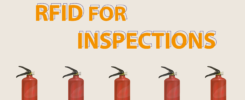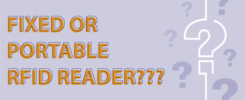Tracking is the term that is most used when talking about the advantages of using radio frequency technology (RFID).
But what is tracking?
In simple terms, we can define it as the path of a product from the manufacturer to the consumer. More specifically, it means keeping track of the entire transformation process, which starts from raw materials, passes through the finished product, up to the consumption and disposal of the product itself.
The concept of tracking has played an increasingly important role in recent years and has extended to a wide range of sectors, such as electronics, food, pharmaceutical, and automotive. It is related to the fact that consumers, with time and especially with the technological means available today, which allow easier access to information, are becoming increasingly conscious of the quality and conditions in which goods are products.
Difference between tracking and tracing
Therefore, as a result of the growing awareness, consumers, before making a purchase, ask themselves a series of questions:
- who produced the good?;
- how was it made?;
- where was it produced?;
- when was it manufactured?;
- what is it made of?.
By doing so, they retrace the history of the product, going back to its origin. This process back in the production chain is called tracing.
Tracking is the communication, by the producer, of each process that allows us to know the different transformation phases of a product. By tracing, on the other hand, we mean the process that goes back in the production chain, to search for a specific event or action. These are specular and interconnected since the path of a product can be traced, only if it has been tracked first.

Why is tracking so important?
It is a transparency tool that gives the product and the company an image of safety and reliability. Moreover, it represents an opportunity for producers to protect, differentiate, and enhance their professionalism compared to competitors. Besides that, it is necessary to emphasize that tracking must not bound to the role of mere informative means for the customer. It becomes, in fact, a crucial element in the optimal management of the supply chain. Keeping track of every transformation and handling during the entire production process allows connecting the physical flow of the goods and the relative informative flow, contributing to the improvement of all the business processes.
In summary, in the light of the above, investing in a system (RFID…. it’s obvious 😉) capable of carefully and safely monitoring and documenting the life cycle of products is extremely important. While it may seem like a complex challenge, the investment will pay off over time.
For more information on RFID contact us at info@tertiumtechnology.it

